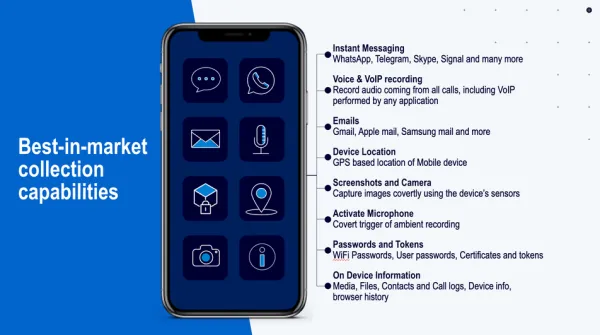The New Reality: When Ransomware Fights Back

A Modern Protection Playbook Based on Scattered Spider's Game-Changing Tactics
Scattered Spider didn't just infiltrate organizations—they rewrote the ransomware playbook entirely. They fought back against incident response teams, countered security moves in real-time, and actively sabotaged operations during eviction attempts. This isn't theoretical. This is happening now.
The days of passive ransomware actors who encrypt and run are over. Today's adversaries engage in active combat with your security team, and your playbook needs to evolve accordingly.

Understanding the New Threat Landscape
The Scattered Spider Wake-Up Call
When Scattered Spider compromised multiple high-profile organizations, they demonstrated tactics that should force every security team to reassess their assumptions:
- Real-time countermeasures: As incident response teams closed doors, attackers pried them back open
- Persistence over profit: They prioritized maintaining access over quick financial gains
- Scorched earth tactics: When cornered, they were willing to destroy environments rather than retreat quietly
- Social engineering sophistication: Successfully impersonating C-level executives to bypass technical controls
Key Attack Vectors That Worked
- Identity-Based Attacks: A simple call to the help desk, impersonating a CFO, resulted in MFA reset and complete compromise
- Privileged Account Exploitation: Executive accounts with excessive permissions became superhighways for lateral movement
- Cloud and Virtual Blind Spots: Virtual desktops and cloud misconfigurations provided unmonitored operating spaces
- Active Resistance: Post-discovery persistence using administrator-level controls to maintain access
Building Your Modern Ransomware Protection Playbook
Phase 1: Know Your Current State
Before implementing new controls, you need brutal honesty about where you stand. Many organizations discover they're less prepared than they thought.
Action Items:
- Conduct a comprehensive incident response maturity assessment. Understanding your current IR capabilities is crucial—you can use tools like irmaturityassessment.com to benchmark your readiness against industry standards
- Map your data landscape to understand what's at risk. Knowing where your sensitive data resides is fundamental—finemydata.com can help automate this discovery process
- Calculate your potential exposure. Understanding the financial impact drives appropriate investment—use databreachcostcalculator.com to quantify your risk
Phase 2: Identity and Access Hardening
The easiest path for attackers remains through your people, not your technology.
Immediate Actions:
- Revolutionize Help Desk Verification
- Implement callback procedures using pre-registered numbers
- Require video verification for sensitive account changes
- Deploy identity verification questions that can't be found on social media
- Create separate verification processes for executive accounts
- Executive Account Audit
- Document every privileged permission for C-suite accounts
- Implement just-in-time access for administrative functions
- Require approval workflows for privilege escalation
- Deploy dedicated monitoring for executive account activities
- Zero Trust Implementation
- Assume breach and verify continuously
- Implement micro-segmentation for critical assets
- Deploy conditional access policies based on risk signals
- Monitor for impossible travel and unusual access patterns

Phase 3: Closing Virtual and Cloud Blind Spots
Virtual environments have become the new battleground for persistent attackers.
Critical Controls:
- Virtual Desktop Infrastructure (VDI) Security
- Deploy EDR solutions specifically designed for virtual environments
- Implement session recording for privileged VDI access
- Monitor for unusual VM creation or modification
- Establish baseline behavior for virtual desktop usage
- Cloud Security Posture Management
- Continuously scan for misconfigurations
- Implement automated remediation for common issues
- Deploy cloud-native security tools that understand context
- Regular compliance assessments are essential—baseline.compliancehub.wiki can help establish and maintain security baselines
- Container and Serverless Security
- Scan container images before deployment
- Implement runtime protection for containers
- Monitor serverless function behaviors
- Establish clear ownership for cloud security
Phase 4: Preparing for Active Adversaries
Modern ransomware operators don't retreat—they retaliate. Your incident response must account for this.
Advanced Preparation Steps:
- Hostile Eviction Playbooks
- Document procedures for removing entrenched attackers
- Identify critical systems that may need isolation
- Prepare for destructive attacks during eviction
- Calculate the potential cost of extended incidents using ircost.breached.company to justify response investments
- Out-of-Band Communication
- Establish communication channels outside corporate infrastructure
- Pre-position response tools on isolated systems
- Create physical response kits with necessary access
- Test failover communication regularly
- Legal and Law Enforcement Preparation
- Pre-establish relationships with law enforcement
- Document evidence preservation procedures
- Understand notification requirements
- Prepare for potential litigation

Phase 5: Detection and Response Evolution
Static defenses fail against adaptive adversaries. Your detection must evolve continuously.
Modern Detection Strategies:
- Behavioral Analytics
- Deploy UEBA to identify anomalous activities
- Create custom detection rules based on your environment
- Monitor for living-off-the-land techniques
- Track administrative tool usage patterns
- Deception Technology
- Deploy honeypots that mirror real assets
- Create fake privileged accounts as tripwires
- Monitor for unauthorized scanning activities
- Use deception to waste attacker time
- Threat Hunting Programs
- Proactively search for indicators of compromise
- Assume breach and hunt for evidence
- Focus on techniques used by groups like Scattered Spider
- Document and share hunting methodologies
Phase 6: Recovery and Resilience
When prevention fails, recovery speed determines survival.
Resilience Building Blocks:
- Immutable Backups
- Implement air-gapped backup solutions
- Test restoration procedures monthly
- Protect backup infrastructure separately
- Document recovery time objectives
- Incident Response Retainers
- Pre-negotiate incident response support
- Understand cyber insurance requirements—cyberinsurancecalc.com can help determine appropriate coverage levels
- Establish escalation procedures
- Conduct joint exercises with retained firms
- Business Continuity Evolution
- Plan for extended outages
- Identify manual workarounds for critical processes
- Test failover procedures regularly
- Consider the true cost of compliance failures—estimate.compliancehub.wiki can help quantify regulatory exposure
BlackCat/ALPHV that reported their victim to the SEC
In November 2023, the BlackCat/ALPHV ransomware group filed an SEC complaint against MeridianLink, a digital lending solutions provider, for allegedly failing to disclose a data breach within the SEC's required four-day timeframe.
Here are the key details of this unprecedented incident:
- The Attack: BlackCat claimed they breached MeridianLink's network on November 7, 2023, stealing company data without encrypting systems
- The Complaint: When MeridianLink allegedly didn't engage in ransom negotiations, BlackCat filed a complaint with the SEC's "Tips, Complaints, and Referrals" site, accusing the company of failing to comply with cybersecurity incident disclosure rules
- The Ultimatum: BlackCat gave MeridianLink 24 hours to pay the ransom or risk having all the allegedly stolen data leaked publicly
- The Irony: The SEC's new cybersecurity disclosure rules weren't even in effect yet - they were set to take effect on December 15, 2023
This appears to be the first time a ransomware group tried to leverage the SEC's rules to facilitate extortion, marking a significant escalation in ransomware tactics. The move was seen as both a pressure tactic against MeridianLink and a warning to other potential victims about the additional regulatory risks they face.
This incident demonstrates how ransomware groups are evolving their tactics beyond just encryption and data theft to include weaponizing regulatory compliance requirements against their victims.

Implementing Your Playbook: A Practical Roadmap
Month 1-2: Assessment and Quick Wins
- Complete maturity assessments across security domains
- Implement enhanced help desk verification
- Audit and reduce executive privileges
- Establish out-of-band communication
Month 3-4: Detection Enhancement
- Deploy behavioral analytics
- Implement deception technologies
- Launch threat hunting program
- Enhance cloud visibility
Month 5-6: Response Preparation
- Develop hostile eviction procedures
- Conduct tabletop exercises with active adversary scenarios
- Test backup restoration procedures
- Refine incident response playbooks
Ongoing: Continuous Improvement
- Monthly testing of critical procedures
- Quarterly updates based on threat intelligence
- Annual third-party assessments
- Regular training on evolving tactics
The New Reality Requires New Thinking
Scattered Spider showed us that ransomware groups have evolved from opportunistic criminals to sophisticated adversaries who view incident response as just another obstacle to overcome. They've studied our playbooks and developed counters.
Your protection strategy must account for adversaries who:
- Fight back against containment efforts
- Maintain persistence despite discovery
- Destroy what they can't steal
- Learn from each engagement
The tools and frameworks exist to build robust defenses, but they require commitment, investment, and most importantly, a fundamental shift in how we think about ransomware defense.

Key Takeaways
- Social engineering remains the weakest link—but it's fixable with proper procedures and training
- Privileged accounts need continuous scrutiny—especially executive accounts that often bypass normal controls
- Virtual environments can't be security afterthoughts—they need the same rigor as physical infrastructure
- Modern incident response must plan for combat—not just containment
- Recovery capabilities determine survival—test them before you need them
The question isn't whether you'll face a Scattered Spider-style attack. It's whether you'll be ready when you do. Start building your modern ransomware protection playbook today—because tomorrow might be too late.
Remember: You get what you rehearse, not what you intend. Start rehearsing now.










